All AbMole products are for research use only, cannot be used for human consumption.
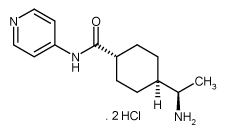
Y-27632 is a potent, selective inhibitor of Rho-associated protein kinases (ROCK) with IC50 values of 140-220 nM for ROCK1 and ROCK2. Y-27632 inhibited the kinase activity of both ROCK-I and ROCK-II in vitro, and this inhibition was reversed by ATP in a competitive manner. The ROCK family of Rho-associated serine-threonine protein kinases is known to play an important role in Rho-mediated cell adhesion and smooth muscle contraction. It also inhibits PRK2 with an IC50 value of 600 nM. One-hour treatment with 10 µM Y-27632 blocks apoptosis of dissociated cultured human embryonic stem cells, increasing cloning efficiency by 25% and sustaining survival up to 30 passages. Y-27632 was found to increases human embryonic stem cell (hESC) survival. In addition, Y-27632 inhibited LPA-induced entosis.

Nat Immunol. 2025 May 30; .
The IL-22–oncostatin M axis promotes intestinal inflammation and tumorigenesis
Y-27632 dihydrochloride purchased from AbMole

Nat Commun. 2025 May 03;16(1):4131.
Extrusion of BMP2+ surface colonocytes promotes stromal remodeling and tissue regeneration
Y-27632 dihydrochloride purchased from AbMole

Nat Commun. 2025 May 29;16(1):4647.
High resolution clonal architecture of hypomutated Wilms tumours
Y-27632 dihydrochloride purchased from AbMole

Chemical Engineering Journal. 2025 Apr 24.
Intracellular and extracellular stiffness regulation in osteosarcoma: Overcoming mechano-immune checkpoints to enhance anti-osteosarcoma immunity
Y-27632 dihydrochloride purchased from AbMole

Gut Microbes. 2025 May 05;17(1):2494717.
Defining enteric bacterial pathogenesis using organoids: Citrobacter rodentium uses EspC, an atypical mucinolytic protease, to penetrate mouse colonic mucus
Y-27632 dihydrochloride purchased from AbMole

Cell Rep Med. 2025 Feb 04;6(2):101941.
Biguanides antithetically regulate tumor properties by the dose-dependent mitochondrial reprogramming-driven c-Src pathway
Y-27632 dihydrochloride purchased from AbMole

Cell Rep Med. 2025 Jan 21;6(1):101878.
Metabolic profiling of patient-derived organoids reveals nucleotide synthesis as a metabolic vulnerability in malignant rhabdoid tumors
Y-27632 dihydrochloride purchased from AbMole

Sci Adv. 2025 Mar 28;11(13):eads7543.
A dyad of human-specific NBPF14 and NOTCH2NLB orchestrates cortical progenitor abundance crucial for human neocortex expansion
Y-27632 dihydrochloride purchased from AbMole

Cell Death Dis. 2025 Feb 25;16(1):128.
Targeting Chk1 and Wee1 kinases enhances radiosensitivity of 2D and 3D head and neck cancer models to X-rays and low/high-LET protons
Y-27632 dihydrochloride purchased from AbMole

Cell Rep. 2025 Feb 19; .
Targeting both the enzymatic and non-enzymatic functions of DHODH as a therapeutic vulnerability in c-Myc-driven cancer
Y-27632 dihydrochloride purchased from AbMole

iScience. 2025 Mar 03; .
An engineered tumor organoid model reveals cellular identity and signaling trajectories underlying SFPQ-TFE3 driven translocation RCC
Y-27632 dihydrochloride purchased from AbMole

Sci Data. 2025 May 27;12(1):878.
Longitudinal scRNA-seq of retinal organoids derived from Stargardt disease patient with ABCA4 mutation
Y-27632 dihydrochloride purchased from AbMole

ACS Biomater Sci Eng. 2025 Jan 13;11(1):451-462.
Simple-Flow: A 3D-Printed Multiwell Flow Plate to Coculture Primary Human Lung Cells at the Air–Liquid Interface
Y-27632 dihydrochloride purchased from AbMole

Int. J. Mol. Sci. 2025 May 26;26(11), 5027.
The Development of 3D Primary Co-Culture Models of the Human Airway
Y-27632 dihydrochloride purchased from AbMole

iScience. 2025 May 26; .
CETSA-MS unveils novel targets engaged by rigosertib to promote anti-tumor activity and inflammatory responses
Y-27632 dihydrochloride purchased from AbMole

PLoS Genet. 2025 Mar 31;21(3):e1011652.
Generation of prostate cancer assembloids modeling the patient-specific tumor microenvironment
Y-27632 dihydrochloride purchased from AbMole

Sci Rep. 2025 Jan 17;15(1):2222.
Dual RNA sequencing of a co-culture model of Pseudomonas aeruginosa and human 2D upper airway organoids
Y-27632 dihydrochloride purchased from AbMole

Front Oncol. 2025 Jan 27;14:1497093.
RET inhibition overcomes resistance to combined CDK4/6 inhibitor and endocrine therapy in ER+ breast cancer
Y-27632 dihydrochloride purchased from AbMole

J Neurosci Methods. 2025 Feb 18;417:110404.
A new protocol for the development of organoids based on molecular mechanisms in the developing newborn rat brain: Prospective applications in the study of Alzheimer’s disease
Y-27632 dihydrochloride purchased from AbMole

Patent. CN119639667A 2025 Mar 18.
Patent. CN119639667A
Y-27632 dihydrochloride purchased from AbMole

Patent. EP4507784A1 2025 Feb 19.
Patent. EP4507784A1
Y-27632 dihydrochloride purchased from AbMole

Patent. WO2025033911A1 2025 Feb 13.
Patent. WO2025033911A1
Y-27632 dihydrochloride purchased from AbMole

Patent. US2025034496A1 2025 Jan 30.
Patent. US2025034496A1
Y-27632 dihydrochloride purchased from AbMole

Patent. KR20250040419A 2025 Mar 24.
Patent. KR20250040419A
Y-27632 dihydrochloride purchased from AbMole

Proquest. 2025 May 31; .
Cell Cycle Suppression in Ovarian Cancer Is Associated With Integrin-β4 and ECM-Driven Cisplatin Resistance
Y-27632 dihydrochloride purchased from AbMole

Nature. 2024 Jul 24;632(8024):411-418.
In vivo interaction screening reveals liver-derived constraints to metastasis
Y-27632 dihydrochloride purchased from AbMole

Cancer Cell. 2024 Mar 11;42(3):487-496.
Improved detection of colibactin-induced mutations by genotoxic E. coli in organoids and colorectal cancer
Y-27632 dihydrochloride purchased from AbMole

Cell. 2024 Feb 1;187(3):712-732.e38.
Human fetal brain self-organizes into long-term expanding organoids
Y-27632 dihydrochloride purchased from AbMole

Nat Immunol. 2024 Apr 25;25(5):790-801.
A dietary commensal microbe enhances antitumor immunity by activating tumor macrophages to sequester iron
Y-27632 dihydrochloride purchased from AbMole

Cell Stem Cell. 2024 Jan;S1934-5909(23)00438-1.
Human conjunctiva organoids to study ocular surface homeostasis and disease
Y-27632 dihydrochloride purchased from AbMole

Nat Metab. 2024 Aug 27;6(8):1529-1548.
The unique catalytic properties of PSAT1 mediate metabolic adaptation to glutamine blockade
Y-27632 dihydrochloride purchased from AbMole

Sci Transl Med. 2024 Apr 3;16(741):eadj5705.
TSPAN8+ myofibroblastic cancer–associated fibroblasts promote chemoresistance in patients with breast cancer
Y-27632 dihydrochloride purchased from AbMole

Nat Commun. 2024 Feb;15(1):1231.
Androgen deprivation induces double-null prostate cancer via aberrant nuclear export and ribosomal biogenesis through HGF and Wnt activation
Y-27632 dihydrochloride purchased from AbMole

Nat Commun. 2024 Feb;15(1):1200.
UPP1 promotes lung adenocarcinoma progression through the induction of an immunosuppressive microenvironment
Y-27632 dihydrochloride purchased from AbMole

Nat Commun. 2024 May 13;15(1):4034.
Mapping of mitogen and metabolic sensitivity in organoids defines requirements for human hepatocyte growth
Y-27632 dihydrochloride purchased from AbMole

J Exp Med. 2024 Feb;221(3):e20231237.
Non-professional efferocytosis of Salmonella-infected intestinal epithelial cells in the neonatal host
Y-27632 dihydrochloride purchased from AbMole

Nat Protoc. 2024 Mar 19.
BEHAV3D: a 3D live imaging platform for comprehensive analysis of engineered T cell behavior and tumor response
Y-27632 dihydrochloride purchased from AbMole

Nat Commun. 2024 Dec 18;15(1):10482.
Collagen signaling and matrix stiffness regulate multipotency in glandular epithelial stem cells in mice
Y-27632 dihydrochloride purchased from AbMole

Cell Rep Med. 2024 Apr 22.
Exploiting a subtype-specific mitochondrial vulnerability for successful treatment of colorectal peritoneal metastases
Y-27632 dihydrochloride purchased from AbMole

Adv Sci. 2024 Jun 15.
Enzalutamide Sensitizes Castration-Resistant Prostate Cancer to Copper-Mediated Cell Death
Y-27632 dihydrochloride purchased from AbMole

Advanced Science. 2024 Jul 25.
Primary and Orthotopic Murine Models of Nasopharyngeal Carcinoma Reveal Molecular Mechanisms Underlying its Malignant Progression
Y-27632 dihydrochloride purchased from AbMole

Gut Microbes. 2024 Jul 16;16(1):2379566.
Bacteroides fragilis alleviates necrotizing enterocolitis through restoring bile acid metabolism balance using bile salt hydrolase and inhibiting FXR-NLRP3 signaling pathway
Y-27632 dihydrochloride purchased from AbMole

Cell Rep Med. 2024 Oct 15;5(10):101777.
Modeling lung adenocarcinoma metastases using patient-derived organoids
Y-27632 dihydrochloride purchased from AbMole

Sci Adv. 2024 Dec 13;10(50):eadq4274.
SRC kinase drives multidrug resistance induced by KRAS-G12C inhibition
Y-27632 dihydrochloride purchased from AbMole

Sci Adv. 2024 Nov 22;10(47):eadr4831.
Acoustic virtual 3D scaffold for direct-interacting tumor organoid–immune cell coculture systems
Y-27632 dihydrochloride purchased from AbMole

J Exp Clin Cancer Res. 2024 Feb 27;43(1):61.
Organoids as a biomarker for personalized treatment in metastatic colorectal cancer: drug screen optimization and correlation with patient response
Y-27632 dihydrochloride purchased from AbMole

J Exp Clin Cancer Res. 2024 Mar 19;43(1):85.
Anaplastic thyroid cancer spheroids as preclinical models to test therapeutics
Y-27632 dihydrochloride purchased from AbMole

Proc Natl Acad Sci U S A. 2024 Mar 19;121(12):e2309902121.
Epidermal growth factor receptor (EGFR) is a target of the tumor-suppressor E3 ligase FBXW7
Y-27632 dihydrochloride purchased from AbMole

EMBO Mol Med. 2024 Jun 3.
A multispectral 3D live organoid imaging platform to screen probes for fluorescence guided surgery
Y-27632 dihydrochloride purchased from AbMole

J Immunother Cancer. 2024 Mar 21;12(3):e007538.
Targeting pediatric cancers via T-cell recognition of the monomorphic MHC class I-related protein MR1
Y-27632 dihydrochloride purchased from AbMole

Cancer Lett. 2024 Jul 12.
Neutrophil extracellular traps promote immune escape in hepatocellular carcinoma by up-regulating CD73 through Notch2
Y-27632 dihydrochloride purchased from AbMole

Cancer Lett. 2024 Oct 02;605:217284.
Exploring epigenetic dynamics unveils a super-enhancer-mediated NDRG1-β-catenin axis in modulating gemcitabine resistance in pancreatic cancer
Y-27632 dihydrochloride purchased from AbMole

Cell Rep. 2024 Jan;43(1):113614.
Tubuloid differentiation to model the human distal nephron and collecting duct in health and disease.
Y-27632 dihydrochloride purchased from AbMole

Cell Rep. 2024 Apr 23;43(4):114019.
Derivation of functional thymic epithelial organoid lines from adult murine thymus
Y-27632 dihydrochloride purchased from AbMole

Materials Today Bio. 2024 Sep 29;29:101262.
Personalized PDAC chip with functional endothelial barrier for tumour biomarker detection: A platform for precision medicine applications
Y-27632 dihydrochloride purchased from AbMole

Biofabrication. 2024 Aug 07;16(4).
Histo-pillar strip for optimal histogel block construction and biomarker analysis in 3D-lung cancer patient-derived organoids
Y-27632 dihydrochloride purchased from AbMole

Cell Death Dis. 2024 Dec 18;15(12):893.
LOC730101 improves ovarian cancer drug sensitivity by inhibiting autophagy-mediated DNA damage repair via BECN1
Y-27632 dihydrochloride purchased from AbMole

Cancer Biology. 2024 May.
The transcriptional landscape of metastatic hormone-naïve prostate cancer
Y-27632 dihydrochloride purchased from AbMole

Eur J Cancer. 2024 Oct 28.
Feasibility analysis of using patient-derived tumour organoids for treatment decision guidance in locally advanced head and neck squamous cell carcinoma
Y-27632 dihydrochloride purchased from AbMole

Cell Rep. 2024 Nov 10.
A platform of functional studies of ESCC-associated gene mutations identifies the roles of TGFBR2 in ESCC progression and metastasis
Y-27632 dihydrochloride purchased from AbMole

J Pathol. 2024 Apr 4.
Cell division-dependent dissemination following E-cadherin loss underlies initiation of diffuse-type gastric cancer
Y-27632 dihydrochloride purchased from AbMole

Phytomedicine. 2024 Oct 18.
Artemisitene induces apoptosis of breast cancer cells by targeting FDFT1 and inhibits the growth of breast cancer patient-derived organoids
Y-27632 dihydrochloride purchased from AbMole

Int J Cancer. 2024 Jan.
TGFβ-induced EN1 promotes tumor budding of adenoid cystic carcinoma in patient-derived organoid model
Y-27632 dihydrochloride purchased from AbMole

Int J Cancer. 2024 Mar 27.
Establishment of patient-derived organoids for guiding personalized therapies in breast cancer patients
Y-27632 dihydrochloride purchased from AbMole

J Cell Mol Med. 2024 May;28(9):e18374.
The combination of breast cancer PDO and mini-PDX platform for drug screening and individualized treatment
Y-27632 dihydrochloride purchased from AbMole

Cells. 2024 Jun 24.
Hydrogel-Integrated Millifluidic Systems: Advancing the Fabrication of Mucus-Producing Human Intestinal Models
Y-27632 dihydrochloride purchased from AbMole

Nutrients. 2024 Jul 25;16(12):1816.
Modeling of Intracellular Taurine Levels Associated with Ovarian Cancer Reveals Activation of p53, ERK, mTOR and DNA-Damage-Sensing-Dependent Cell Protection
Y-27632 dihydrochloride purchased from AbMole

Nutrients. 2024 Jun 9;16(12):1816.
Modeling of Intracellular Taurine Levels Associated with Ovarian Cancer Reveals Activation of p53, ERK, mTOR and DNA-Damage-Sensing-Dependent Cell Protection
Y-27632 dihydrochloride purchased from AbMole

Clin Epigenetics. 2024 Nov 10;16(1):156.
DNA methylation classifier to diagnose pancreatic ductal adenocarcinoma metastases from different anatomical sites
Y-27632 dihydrochloride purchased from AbMole

Clin Epigenetics. 2024 Nov 15.
DNA methylation classifier to diagnose pancreatic ductal adenocarcinoma metastases from different anatomical sites
Y-27632 dihydrochloride purchased from AbMole

Nutrition. 2024 Aug 29.
Lactobacillus plantarum NCHBL-004 Modulates High-Fat Diet–Induced Weight Gain and Enhances GLP-1 Production for Blood Glucose Regulation
Y-27632 dihydrochloride purchased from AbMole

Cell Rep Methods. 2024 Jun 16.
A co-culture system of macrophages with breast cancer tumoroids to study cell interactions and therapeutic responses
Y-27632 dihydrochloride purchased from AbMole

Scientific Reports. 2024 Jun 26;14(7):999.
Low BCL-xL expression in triple-negative breast cancer cells favors chemotherapy efficacy, and this effect is limited by cancer-associated fibroblasts
Y-27632 dihydrochloride purchased from AbMole

Virchows Archiv. 2024 Jul 09;28(7):e18190.
Fluorescence confocal microscopy for evaluation of fresh surgical specimens and consecutive tumor cell isolation in rare pediatric tumors
Y-27632 dihydrochloride purchased from AbMole

Head and Neck Pathology . 2024 Jul 02;20(4):e1011945.
Clinicopathological Factors as Predictors for Establishment of Patient Derived Head and Neck Squamous Cell Carcinoma Organoids
Y-27632 dihydrochloride purchased from AbMole

J Mammary Gland Biol Neoplasia. 2024 May 2.
A novel preclinical model of the normal human breast
Y-27632 dihydrochloride purchased from AbMole

organoid. 2024 Apr 21.
ERdj5-mediated regulation of proliferation and differentiation in colon organoids under stressinflammatory
Y-27632 dihydrochloride purchased from AbMole

biorxiv. 2024 Mar 26.
Infection of human organoids supports an intestinal niche for Chlamydia trachomatis
Y-27632 dihydrochloride purchased from AbMole

biorxiv. 2024 Mar 15.
Tuft cells act as regenerative stem cells in the human intestine
Y-27632 dihydrochloride purchased from AbMole

STAR Protoc. 2024 Jul 15;5(3):103189.
Protocol to create isogenic disease models from adult stem cell-derived organoids using next-generation CRISPR tools
Y-27632 dihydrochloride purchased from AbMole

STAR Protoc. 2024 Oct 01.
Protocol for culturing patient-derived organoids of cervical cancer
Y-27632 dihydrochloride purchased from AbMole

STAR Protoc. 2024 Dec 20.
Protocol for generating a co-culture of macrophages with breast cancer tumoroids
Y-27632 dihydrochloride purchased from AbMole

bioRxiv. 2024 Oct 08.
Quantitative proteomic mass spectrometry of protein kinases to determine dynamic heterogeneity of the human kinome
Y-27632 dihydrochloride purchased from AbMole

BioRxiv. 2024 Nov 09.
NovumRNA: accurate prediction of non-canonical tumor antigens from RNA sequencing data
Y-27632 dihydrochloride purchased from AbMole

BioRxiv. 2024 Oct 30.
Prostate-specific membrane receptor PPAP facilitates E. coli invasion of luminal prostate cells via FimH binding
Y-27632 dihydrochloride purchased from AbMole

Nutrients. 2024 May 14;2023.02.24.529893.
Modeling of Intracellular Taurine Levels Associated with Ovarian Cancer Reveals Activation of p53, ERK, mTOR and DNA-Damage-Sensing-Dependent Cell Protection
Y-27632 dihydrochloride purchased from AbMole

Cell and Tissue Biology. 2024 Jun;Volume 18, 296-306.
Interaction of pRb and β-Catenin in Cancer and Normal Human Prostate Tissue
Y-27632 dihydrochloride purchased from AbMole

4 Medizinische Fakultät. 2024 Sep 03.
Assessing Endometrial SARS-CoV-2 Infection with 3D Spheroids and Organoids: Implications for Vertical Transmission
Y-27632 dihydrochloride purchased from AbMole

Patent. WO2024196251A1 2024 Sep 26.
Patent. WO2024196251A1
Y-27632 dihydrochloride purchased from AbMole

Patent. CN118252922A 2024 Jun 28.
Patent. CN118252922A
Y-27632 dihydrochloride purchased from AbMole

Patent. CN118127118A 2024 Jun 04.
Patent. CN118127118A
Y-27632 dihydrochloride purchased from AbMole

Patent. CN117643594A 2024 Mar 05.
Patent. CN117643594A
Y-27632 dihydrochloride purchased from AbMole

Patent. CN117844735A 2024 Apr 09.
Patent. CN117844735A
Y-27632 dihydrochloride purchased from AbMole

Patent. KR102627833B1 2024 Jan 23.
Patent. KR102627833B1
Y-27632 dihydrochloride purchased from AbMole

Patent. EP4455665A1 2024 Oct 30.
Patent. EP4455665A1
Y-27632 dihydrochloride purchased from AbMole

Patent. KR102643748B1 2024 Mar 05.
Patent. KR102643748B1
Y-27632 dihydrochloride purchased from AbMole

Patent. AU2022413699A1 2024 Jul 04.
Patent. AU2022413699A1
Y-27632 dihydrochloride purchased from AbMole

Patent. CN118995819A 2024 Nov 22.
Patent. CN118995819A
Y-27632 dihydrochloride purchased from AbMole

Patent. CN114891735B 2024 Aug 13.
Patent. CN114891735B
Y-27632 dihydrochloride purchased from AbMole

Patent. CN117050934B 2024 Jan 30.
Patent. CN117050934B
Y-27632 dihydrochloride purchased from AbMole

Nat Biotechnol. 2023 Feb 23.
Engineered human hepatocyte organoids enable CRISPR-based target discovery and drug screening for steatosis
Y-27632 dihydrochloride purchased from AbMole

Cancer Cell. 2023 Nov 13;41(11):1945-1962.e11.
Tumor-resident Lactobacillus iners confer chemoradiation resistance through lactate-induced metabolic rewiring
Y-27632 dihydrochloride purchased from AbMole

Cancer Cell. 2023 Dec 11;41(12):2083-2099.e9.
Druggable growth dependencies and tumor evolution analysis in patient-derived organoids of neuroendocrine neoplasms from multiple body sites
Y-27632 dihydrochloride purchased from AbMole

Cell Res. 2023 Jun;33(6):464-478.
SCUBE2 mediates bone metastasis of luminal breast cancer by modulating immune-suppressive osteoblastic niches
Y-27632 dihydrochloride purchased from AbMole

Signal Transduct Target Ther. 2023 May 19;8(1):187.
FBXW7β loss-of-function enhances FASN-mediated lipogenesis and promotes colorectal cancer growth
Y-27632 dihydrochloride purchased from AbMole

Cell Discov. 2023 Mar 7;9(1):26.
Reprogramming of palmitic acid induced by dephosphorylation of ACOX1 promotes β-catenin palmitoylation to drive colorectal cancer progression
Y-27632 dihydrochloride purchased from AbMole

Nat Commun. 2023 May 27;14(1):3074.
Single-cell transcriptomics reveals immune suppression and cell states predictive of patient outcomes in rhabdomyosarcoma
Y-27632 dihydrochloride purchased from AbMole

Nat Commun. 2023 Jul 13;14(1):4193.
ACTL6A protects gastric cancer cells against ferroptosis through induction of glutathione synthesis
Y-27632 dihydrochloride purchased from AbMole

Nat Commun. 2023 Nov 28;14(1):7361.
Temporal morphogen gradient-driven neural induction shapes single expanded neuroepithelium brain organoids with enhanced cortical identity
Y-27632 dihydrochloride purchased from AbMole

Med. 2023 May 12;4(5):290-310.e12.
Patient-derived head and neck cancer organoids allow treatment stratification and serve as a tool for biomarker validation and identification
Y-27632 dihydrochloride purchased from AbMole

Nat Commun. 2023 Jun 16;14(1):3469.
Single cell profiling of female breast fibroadenoma reveals distinct epithelial cell compositions and therapeutic targets
Y-27632 dihydrochloride purchased from AbMole

J Exp Med. 2023 Nov 6;220(11):e20211743.
MYC is a clinically significant driver of mTOR inhibitor resistance in breast cancer
Y-27632 dihydrochloride purchased from AbMole

Adv Sci (Weinh). 2023 Jul 23;e2302640.
Micro-Engineered Organoid-on-a-Chip Based on Mesenchymal Stromal Cells to Predict Immunotherapy Responses of HCC Patients
Y-27632 dihydrochloride purchased from AbMole

Sci Adv. 2023 Aug 2;9(31):eadf3566.
PHF8-GLUL axis in lipid deposition and tumor growth of clear cell renal cell carcinoma
Y-27632 dihydrochloride purchased from AbMole

Sci Adv. 2023 Oct 6;9(40):eadf6911.
SOX9-positive pituitary stem cells differ according to their position in the gland and maintenance of their progeny depends on context
Y-27632 dihydrochloride purchased from AbMole

Proc Natl Acad Sci U S A. 2023 Feb 7;120(6):e2216836120.
Tubuloid culture enables long-term expansion of functional human kidney tubule epithelium from iPSC-derived organoids
Y-27632 dihydrochloride purchased from AbMole

Exp Mol Med. 2023 Feb 9.
ERdj5 protects goblet cells from endoplasmic reticulum stress-mediated apoptosis under inflammatory conditions
Y-27632 dihydrochloride purchased from AbMole

Additive Manufacturing. 2023 Jan 30.
Bioactive photocrosslinkable resin solely based on refined decellularized small intestine submucosa for vat photopolymerization of in vitro tissue mimics
Y-27632 dihydrochloride purchased from AbMole

Adv Healthc Mater. 2023 May 22;e2300666.
Manipulating the Dynamic Adaptivity of a Fluid Interface to Maintain the Multipotency of Mesenchymal Stromal Cells
Y-27632 dihydrochloride purchased from AbMole

Gut Microbes. 2023 Jan-Dec;15(1):2186114.
Therapeutic potential of Clostridium butyricum anticancer effects in colorectal cancer
Y-27632 dihydrochloride purchased from AbMole

Cell Rep. 2023 Dec ;43(1):113614.
Tubuloid differentiation to model the human distal nephron and collecting duct in health and disease
Y-27632 dihydrochloride purchased from AbMole

Cell Rep. 2023 Dec;43, 113614.
Tubuloid differentiation to model the human distal nephron and collecting duct in health and disease
Y-27632 dihydrochloride purchased from AbMole

Elife. 2023 May 11;12:e83867.
High-grade serous ovarian carcinoma organoids as models of chromosomal instability
Y-27632 dihydrochloride purchased from AbMole

J Transl Med. 2023 Jan 9;21(1):9.
Papillary thyroid cancer organoids harboring BRAFV600E mutation reveal potentially beneficial effects of BRAF inhibitor-based combination therapies
Y-27632 dihydrochloride purchased from AbMole

Oncogene. 2023 Aug 17.
Persistent organic pollutants promote aggressiveness in prostate cancer
Y-27632 dihydrochloride purchased from AbMole

NPJ Precis Oncol. 2023 Nov 2;7(1):112.
Patient-derived organoids identify tailored therapeutic options and determinants of plasticity in sarcomatoid urothelial bladder cancer
Y-27632 dihydrochloride purchased from AbMole

Cell Commun Signal. 2023 Jan 23;21(1):22.
Extracellular matrix stiffness mediates uterine repair via the Rap1a/ARHGAP35/RhoA/F-actin/YAP axis
Y-27632 dihydrochloride purchased from AbMole

Breast Cancer Res. 2023 Aug 4;25(1):91.
miR-203 drives breast cancer cell differentiation
Y-27632 dihydrochloride purchased from AbMole

Int J Radiat Oncol Biol Phys. 2023 Oct 9;S0360-3016(23)07970-1.
Radiosensitization by hyperthermia critically depends on the time interval
Y-27632 dihydrochloride purchased from AbMole

Phytomedicine. 2023 Jun.
Oxypalmatin regulates proliferation and apoptosis of breast cancer cells by inhibiting PI3K/AKT signaling and its efficacy against breast cancer organoids
Y-27632 dihydrochloride purchased from AbMole

Phytomedicine. 2023 Jun;114:154752.
Oxypalmatine regulates proliferation and apoptosis of breast cancer cells by inhibiting PI3K/AKT signaling and its efficacy against breast cancer organoids
Y-27632 dihydrochloride purchased from AbMole

Pharmaceutics. 2023 Jan 12;15(1):261.
GelMA, Click-Chemistry Gelatin and Bioprinted Polyethylene Glycol-Based Hydrogels as 3D Ex Vivo Drug Testing Platforms for Patient-Derived Breast Cancer Organoids
Y-27632 dihydrochloride purchased from AbMole

Int J Cancer. 2023 Aug 25.
Microfluidic droplet encapsulation-guided organoid growth promotes parental tumor phenotype recapitulation
Y-27632 dihydrochloride purchased from AbMole

Int J Mol Sci. 2023 Feb 1;24(3):2830.
Early Cell Cultures from Prostate Cancer Tissue Express Tissue Specific Epithelial and Cancer Markers
Y-27632 dihydrochloride purchased from AbMole

Int J Mol Sci. 2023 Jul 4;24(13):11048.
Cerebral-Organoid-Derived Exosomes Alleviate Oxidative Stress and Promote LMX1A-Dependent Dopaminergic Differentiation
Y-27632 dihydrochloride purchased from AbMole

iScience. 2023 Jul 3.
Targeting ITGB4/SOX2-driven lung cancer stem cells using proteasome inhibitors
Y-27632 dihydrochloride purchased from AbMole

iScience. 2023 Sep 27;26(10):108076.
3D-printed scaffold harboring copper ions combined with near-infrared irradiation for local therapy of cancer
Y-27632 dihydrochloride purchased from AbMole

Front Endocrinol (Lausanne). 2023 Mar 13;14:1140888.
Establishment of papillary thyroid cancer organoid lines from clinical specimens
Y-27632 dihydrochloride purchased from AbMole

J Cell Mol Med. 2023 Jun 6.
RhoA/ROCK1 regulates the mitochondrial dysfunction through Drp1 induced by Porphyromonas gingivalis in endothelial cells
Y-27632 dihydrochloride purchased from AbMole

Chem Biol Interact. 2023 Dec 1;386:110777.
Assessment of doxorubicin toxicity using human cardiac organoids: A novel model for evaluating drug cardiotoxicity
Y-27632 dihydrochloride purchased from AbMole

Inflamm Bowel Dis. 2023 Feb 1;29(2):195-206.
Molecular and Functional Characterization of Human Intestinal Organoids and Monolayers for Modeling Epithelial Barrier
Y-27632 dihydrochloride purchased from AbMole

Breast Cancer Res Treat. 2023 May 19.
Organoid models derived from patients with malignant phyllodes tumor of the breast
Y-27632 dihydrochloride purchased from AbMole

Eur J Pharm Sci. 2023 May 25;106481.
Intestinal organoids as an in vitro platform to characterize disposition, metabolism, and safety profile of small molecules
Y-27632 dihydrochloride purchased from AbMole

BMC Cancer. 2023 Aug 8;23(1):732.
BYL719 reverses gefitinib-resistance induced by PI3K/AKT activation in non-small cell lung cancer cells
Y-27632 dihydrochloride purchased from AbMole

iScience. 2023 Nov 4;26(12):108399.
Functional and spatial proteomics profiling reveals intra-and intercellular signaling crosstalk in colorectal cancer
Y-27632 dihydrochloride purchased from AbMole

Hum Cell. 2023 Mar 3.
Insights into the characteristics of primary radioresistant cervical cancer using single-cell transcriptomics
Y-27632 dihydrochloride purchased from AbMole

PLoS One. 2023 Jan 5;18(1):e0279821.
A living biobank of matched pairs of patient-derived xenografts and organoids for cancer pharmacology
Y-27632 dihydrochloride purchased from AbMole

Vet Comp Oncol. 2023 Mar;21(1):111-122.
Organoids of patient‐derived medullary thyroid carcinoma: The first milestone towards a new in vitro model in dogs
Y-27632 dihydrochloride purchased from AbMole

Animal Model Exp Med. 2023 Oct;6(5):409-418.
Establishment of organoid models for pancreatic ductal adenocarcinoma and screening of individualized therapy strategy
Y-27632 dihydrochloride purchased from AbMole

Prev Nutr Food Sci. 2023 Sep 30;28(3):360-369.
Organoid Establishment of Long-Term Culture Using Primary Mouse Hepatocytes and Evaluation of Liver Function
Y-27632 dihydrochloride purchased from AbMole

bioRxiv. 2023 Aug 26;2023.02.24.529893.
The nutritional supplement taurine activates p53-dependent and independent tumor suppressor mechanisms in various cellular models of ovarian cancer
Y-27632 dihydrochloride purchased from AbMole

STAR Protoc. 2023 Nov 20;4(4):102735.
Protocol for establishing primary human lung organoid-derived air-liquid interface cultures from cryopreserved human lung tissue
Y-27632 dihydrochloride purchased from AbMole

Patent. CN117050934A 2023 Nov 14.
Patent. CN117050934A
Y-27632 dihydrochloride purchased from AbMole

Patent. CN117074141A 2023 Nov 17.
Patent. CN117074141A
Y-27632 dihydrochloride purchased from AbMole

Patent. CN116769836A 2023 Sep 19.
Patent. CN116769836A
Y-27632 dihydrochloride purchased from AbMole

Patent. CN116966176A 2023 Oct 31.
Patent. CN116966176A
Y-27632 dihydrochloride purchased from AbMole

Patent. KR20230169853A 2023 Dec 18.
Patent. KR20230169853A
Y-27632 dihydrochloride purchased from AbMole

Patent. CN116898855A 2023 Oct 20.
Patent. CN116898855A
Y-27632 dihydrochloride purchased from AbMole

Patent. KR20230169838A 2023 Dec 18.
Patent. KR20230169838A
Y-27632 dihydrochloride purchased from AbMole

Patent. WO2023198677A1 2023 Oct 19.
Patent. WO2023198677A1
Y-27632 dihydrochloride purchased from AbMole

Patent. CN116676264A 2023 Sep 01.
Patent. CN116676264A
Y-27632 dihydrochloride purchased from AbMole

Patent. WO2023115048A1 2023 Jun 22.
Patent. WO2023115048A1
Y-27632 dihydrochloride purchased from AbMole

Patent. CN115820562A 2023 Mar 21.
Patent. CN115820562A
Y-27632 dihydrochloride purchased from AbMole

Patent. CN115558633A 2023 Jan 03.
Patent. CN115558633A
Y-27632 dihydrochloride purchased from AbMole

Patent. CN114606192B 2023 Aug 08.
Patent. CN114606192B
Y-27632 dihydrochloride purchased from AbMole

Patent. CN112852714B 2023 Jul 21.
Patent. CN112852714B
Y-27632 dihydrochloride purchased from AbMole

Patent. CN114480250B 2023 Sep 08.
Patent. CN114480250B
Y-27632 dihydrochloride purchased from AbMole

Patent. CN113943755B 2023 Sep 12.
Patent. CN113943755B
Y-27632 dihydrochloride purchased from AbMole

Patent. CN115925944A 2023 Apr 07.
Patent. CN115925944A
Y-27632 dihydrochloride purchased from AbMole

Patent. CN116987669A 2023 Nov 03.
Patent. CN116987669A
Y-27632 dihydrochloride purchased from AbMole

Patent. CN115671142A 2023 Feb 03.
Patent. CN115671142A
Y-27632 dihydrochloride purchased from AbMole

Patent. CN116731968A 2023 Sep 12.
Patent. CN116731968A
Y-27632 dihydrochloride purchased from AbMole

Patent. CN112779209B 2023 Jan 24.
Patent. CN112779209B
Y-27632 dihydrochloride purchased from AbMole

Patent. EP4291636A1 2023 Dec 20.
Patent. EP4291636A1
Y-27632 dihydrochloride purchased from AbMole

Patent. KR20230169821A 2023 Dec 18.
Patent. KR20230169821A
Y-27632 dihydrochloride purchased from AbMole

Nature. 2022 Aug;608(7923):609-617.
Truncated FGFR2 is a clinically actionable oncogene in multiple cancers
Y-27632 dihydrochloride purchased from AbMole

Nat Biotechnol. 2022 Jul 25.
Uncovering the mode of action of engineered T cells in patient cancer organoids
Y-27632 dihydrochloride purchased from AbMole

Mol Cancer. 2022 Mar 18;21(1):77.
Cholesterol promotes EGFR-TKIs resistance in NSCLC by inducing EGFR/Src/Erk/SP1 signaling-mediated ERRα re-expression
Y-27632 dihydrochloride purchased from AbMole

Cell Stem Cell. 2022 Aug 19;S1934-5909(22)00338-1.
Optimized human intestinal organoid model reveals interleukin-22-dependency of paneth cell formation
Y-27632 dihydrochloride purchased from AbMole

Nat Commun. 2022 Apr 4;13(1):1804.
Loss of Rnf31 and Vps4b sensitizes pancreatic cancer to T cell-mediated killing
Y-27632 dihydrochloride purchased from AbMole

Nat Commun. 2022 Jul 28;13(1):4364.
Aberrant androgen action in prostatic progenitor cells induces oncogenesis and tumor development through IGF1 and Wnt axes
Y-27632 dihydrochloride purchased from AbMole

Nat Commun. 2022 May 13;13(1):2672.
N6-methyladenosine regulated FGFR4 attenuates ferroptotic cell death in recalcitrant HER2-positive breast cancer
Y-27632 dihydrochloride purchased from AbMole

Nat Commun. 2022 Jul 9;13(1):3998.
Acetyl-CoA-Carboxylase 1-mediated de novo fatty acid synthesis sustains Lgr5+ intestinal stem cell function
Y-27632 dihydrochloride purchased from AbMole

Nat Commun. 2022 Oct 5;13(1):5878.
Helicobacter pylori shows tropism to gastric differentiated pit cells dependent on urea chemotaxis
Y-27632 dihydrochloride purchased from AbMole

Adv Sci (Weinh). 2022 May;9(13):e2104301.
Self‐Organization of Tissue Growth by Interfacial Mechanical Interactions in Multilayered Systems
Y-27632 dihydrochloride purchased from AbMole

J Extracell Vesicles. 2022 Nov;11(11):e12280.
A human kidney and liver organoid-based multi-organ-on-a-chip model to study the therapeutic effects and biodistribution of mesenchymal stromal cell-derived extracellular vesicles
Y-27632 dihydrochloride purchased from AbMole

Small. 2022 Jan;18(2):e2104328.
Topographic Cues Guiding Cell Polarization via Distinct Cellular Mechanosensing Pathways
Y-27632 dihydrochloride purchased from AbMole

Cell Genom. 2022 Feb;2(2):100095.
Drug screening and genome editing in human pancreatic cancer organoids identifies drug-gene interactions and candidates for off-label therapy
Y-27632 dihydrochloride purchased from AbMole

Cancer Res. 2022 Feb 18;canres.CAN-21-2807-E.2021.
Patient-derived triple negative breast cancer organoids provide robust model systems that recapitulate tumor intrinsic characteristics
Y-27632 dihydrochloride purchased from AbMole

Proc Natl Acad Sci U S A. 2022 Nov 16;119(46):e2212057119.
Mapping prohormone processing by proteases in human enteroendocrine cells using genetically engineered organoid models
Y-27632 dihydrochloride purchased from AbMole

EMBO Mol Med. 2022 Sep 7;14(9):e15687.
Store-operated calcium entry controls innate and adaptive immune cell function in inflammatory bowel disease
Y-27632 dihydrochloride purchased from AbMole

Fundamental Research. 2022 June 3;2022;12:37.
Droplet-engineered organoids recapitulate parental tissue transcriptome with inter-organoid homogeneity and inter-tumor cell heterogeneity
Y-27632 dihydrochloride purchased from AbMole

Cell Rep. 2022 Jun 28.
G6PD Inhibition Sensitizes Ovarian Cancer Cells to Oxidative Stress in the Metastatic Omental Microenvironment
Y-27632 dihydrochloride purchased from AbMole

Cell Rep. 2022 Mar 1;38(9):110438.
BMP gradient along the intestinal villus axis controls zonated enterocyte and goblet cell states
Y-27632 dihydrochloride purchased from AbMole

Cell Rep. 2022 Aug 23;40(8):111266.
SF3B1 facilitates HIF1-signaling and promotes malignancy in pancreatic cancer
Y-27632 dihydrochloride purchased from AbMole

J Nanobiotechnology. 2022 Jul 15;20(1):326.
Differentiated kidney tubular cell-derived extracellular vesicles enhance maturation of tubuloids
Y-27632 dihydrochloride purchased from AbMole

Cell Mol Gastroenterol Hepatol. 2022;13(3):681-694.
Temporal transcript profiling identifies a role for unfolded protein stress in human gut ischemia-reperfusion injury
Y-27632 dihydrochloride purchased from AbMole

Microbiol Spectr. 2022 Jun 29;10(3):e0105522.
Colon Tumors in Enterotoxigenic Bacteroides fragilis (ETBF)-Colonized Mice Do Not Display a Unique Mutational Signature but Instead Possess Host-Dependent
Y-27632 dihydrochloride purchased from AbMole

NPJ Breast Cancer. 2022 Jul 12;8(1):81.
Ductal keratin 15+ luminal progenitors in normal breast exhibit a basal-like breast cancer transcriptomic signature
Y-27632 dihydrochloride purchased from AbMole

Commun Biol. 2022 Oct 14;5(1):1095.
Rapid differentiation of hiPSCs into functional oligodendrocytes using an OLIG2 synthetic modified messenger RNA
Y-27632 dihydrochloride purchased from AbMole

Commun Biol. 2022 Oct 14;5(1):1094.
A comprehensive transcriptomic comparison of hepatocyte model systems improves selection of models for experimental use
Y-27632 dihydrochloride purchased from AbMole

Commun Biol. 2022 Oct 28;5(1):1144.
Live slow-frozen human tumor tissues viable for 2D, 3D, ex vivo cultures and single-cell RNAseq
Y-27632 dihydrochloride purchased from AbMole

Int J Mol Sci. 2022 Jan 24;23(3):1286.
Unravelling Mechanisms of Doxorubicin-Induced Toxicity in 3D Human Intestinal Organoids
Y-27632 dihydrochloride purchased from AbMole

Neoplasia. 2022 May;27:100784.
Inhibition of HDACs reduces Ewing sarcoma tumor growth through EWS-FLI1 protein destabilization
Y-27632 dihydrochloride purchased from AbMole

iScience. 2022 Jan 6;25(2):103736.
Human induced pluripotent stem cells display a similar mutation burden as embryonic pluripotent cells in vivo
Y-27632 dihydrochloride purchased from AbMole

iScience. 2022 Jan;25(2):103736.
Human induced pluripotent stem cells display a similar mutation burden as embryonic pluripotent cells in vivo
Y-27632 dihydrochloride purchased from AbMole

Front Bioeng Biotechnol. 2022 Mar 1;10:820930.
Substrate Stiffness Determines the Establishment of Apical-Basal Polarization in Renal Epithelial Cells but Not in Tubuloid-Derived Cells
Y-27632 dihydrochloride purchased from AbMole

Dis Model Mech. 2022 May 1;15(5):dmm049379.
Endometrial organoids derived from Mayer–Rokitansky–Küster–Hauser syndrome patients provide insights into disease-causing pathways
Y-27632 dihydrochloride purchased from AbMole

Journal of Ovarian Research. 2022 Apr.
Using Genetically Encoded Fluorescent Biosensors to Interrogate Ovarian Cancer Metabolism
Y-27632 dihydrochloride purchased from AbMole

Cancers (Basel). 2022 May 19;14(10):2508.
Dynamic Visualization of TGF-β/SMAD3 Transcriptional Responses in Single Living Cells
Y-27632 dihydrochloride purchased from AbMole

Appl Biochem Biotechnol Appl Biochem Biotechnol. 2022 Jul 1.
Apatinib Through Activating the RhoA/ROCK Signaling Pathway to Cause Dysfunction of Vascular Smooth Muscle CellsMuscle Cells
Y-27632 dihydrochloride purchased from AbMole

STAR Protoc. 2022 Jul 31;3(3):101597.
Protocols to culture and harvest hepatic tumor organoids for metabolic assays
Y-27632 dihydrochloride purchased from AbMole

STAR Protoc. 2022 Aug 18;3(3):101639.
Differentiation and CRISPR-Cas9-mediated genetic engineering of human intestinal organoids
Y-27632 dihydrochloride purchased from AbMole

Fundamental Research. 2022 Jun.
Droplet-engineered organoids recapitulate parental tissue transcriptome with inter-organoid homogeneity and inter-tumor cell heterogeneity
Y-27632 dihydrochloride purchased from AbMole

J Vis Exp. 2022 Feb 12.
Establishment and Genetic Manipulation of Murine Hepatocyte Organoids
Y-27632 dihydrochloride purchased from AbMole

STAR Protoc. 2022 Jan 10;3(1):101079.
Normal and tumor-derived organoids as a drug screening platform for tumor-specific drug vulnerabilities
Y-27632 dihydrochloride purchased from AbMole

Utrecht University. 2022.
The beginning of a new life: characterizing somatic mutation accumulation in fetal stem cells
Y-27632 dihydrochloride purchased from AbMole

Patent. CN115261326A 2022 Nov 01.
Patent. CN115261326A
Y-27632 dihydrochloride purchased from AbMole

Patent. CN114891735A 2022 Aug 12.
Patent. CN114891735A
Y-27632 dihydrochloride purchased from AbMole

Patent. CN114736966A 2022 Jul 12.
Patent. CN114736966A
Y-27632 dihydrochloride purchased from AbMole

Patent. WO2022173300A1 2022 Aug 18.
Patent. WO2022173300A1
Y-27632 dihydrochloride purchased from AbMole

Patent. CN113186165B 2022 Jun 28.
Patent. CN113186165B
Y-27632 dihydrochloride purchased from AbMole

Patent. CN114369573A 2022 Apr 19.
Patent. CN114369573A
Y-27632 dihydrochloride purchased from AbMole

Patent. KR102403466B1 2022 May 30.
Patent. KR102403466B1
Y-27632 dihydrochloride purchased from AbMole

Patent. CN114075538B 2022 Nov 25.
Patent. CN114075538B
Y-27632 dihydrochloride purchased from AbMole

Patent. CN114075539A 2022 Feb 22.
Patent. CN114075539A
Y-27632 dihydrochloride purchased from AbMole

Patent. US2022154143A1 2022 May 19.
Patent. US2022154143A1
Y-27632 dihydrochloride purchased from AbMole

Patent. CN111117946B 2022 Mar 22.
Patent. CN111117946B
Y-27632 dihydrochloride purchased from AbMole

Patent. US2022389379A1 2022 Dec 08.
Patent. US2022389379A1
Y-27632 dihydrochloride purchased from AbMole

Patent. EP3976760A1 2022 Apr 06.
Patent. EP3976760A1
Y-27632 dihydrochloride purchased from AbMole

Patent. CN114075538A 2022 Feb 22.
Patent. CN114075538A
Y-27632 dihydrochloride purchased from AbMole

Cell Stem Cell. 2021 Jul 1;28(7):1221-1232.e7.
Exploring the human lacrimal gland using organoids and single-cell sequencing
Y-27632 dihydrochloride purchased from AbMole

Nat Commun. 2021 Jun 23;12(1):3896.
Single cell derived mRNA signals across human kidney tumors
Y-27632 dihydrochloride purchased from AbMole

Nat Commun. 2021 Sep 17;12(1):5498.
A CRISPR/Cas9 genetically engineered organoid biobank reveals essential host factors for coronaviruses
Y-27632 dihydrochloride purchased from AbMole

Nat Commun. 2021 Mar 3;12(1):1407.
Somatic mutations and single-cell transcriptomes reveal the root of malignant rhabdoid tumours
Y-27632 dihydrochloride purchased from AbMole

Adv Sci (Weinh). 2021 Jan.
Chemotherapy‐Enriched THBS2‐Deficient Cancer Stem Cells Drive Hepatocarcinogenesis through Matrix Softness Induced Histone H3 Modifications
Y-27632 dihydrochloride purchased from AbMole

Adv Sci (Weinh). 2021 Feb.
Inhibition Lysosomal Degradation of Clusterin by Protein Kinase D3 Promotes Triple‐Negative Breast Cancer Tumor Growth
Y-27632 dihydrochloride purchased from AbMole

Adv Sci (Weinh). 2021 Jan 6;8(4):2003205.
Inhibition Lysosomal Degradation of Clusterin by Protein Kinase D3 Promotes Triple-Negative Breast Cancer Tumor Growth
Y-27632 dihydrochloride purchased from AbMole

Nat Protoc. 2021 Oct;16(10):4633-4649.
Intestinal organoid cocultures with microbes
Y-27632 dihydrochloride purchased from AbMole

Proceedings of the National Academy of Sciences. 2021 Dec 16;118 (51) e2117017118.
Adult Mouse and Human Organoids derived from Thyroid Follicular Cells and modelling of Graves’ Hyperthyroidism
Y-27632 dihydrochloride purchased from AbMole

Proceedings of the National Academy of Sciences. 2021.
Bacterially produced R-spondin3 increases Hepatocyte Proliferation Independent of Liver Zonation
Y-27632 dihydrochloride purchased from AbMole

EMBO Mol Med. 2021 Jul 7;13(7):e13067.
Cysteamine-bicalutamide combination therapy corrects proximal tubule phenotype in cystinosis
Y-27632 dihydrochloride purchased from AbMole

Proc Natl Acad Sci U S A. 2021 Feb 16;118(7):e2017115118.
SOX2 is required independently in both stem and differentiated cells for pituitary tumorigenesis in p27 null mice
Y-27632 dihydrochloride purchased from AbMole

Nature Protocols. 2021 Jan;16(1):182-217.
Establishment of human fetal hepatocyte organoids and CRISPR-Cas9-based gene knockin and knockout in organoid cultures from human liver
Y-27632 dihydrochloride purchased from AbMole

Cell Rep. 2021 Mar 9;34(10):108819.
Human gastrointestinal epithelia of the esophagus, stomach, and duodenum resolved at single-cell resolution
Y-27632 dihydrochloride purchased from AbMole

Cell Rep. 2021 Jul 20;36(3):109351.
Early invasion of the bladder wall by solitary bacteria protects UPEC from antibiotics and neutrophil swarms in an organoid model
Y-27632 dihydrochloride purchased from AbMole

Cell Rep. 2021 Aug 24;36(8):109568.
Organoid-based drug screening reveals neddylation as therapeutic target for malignant rhabdoid tumors
Y-27632 dihydrochloride purchased from AbMole

Cell Rep. 2021 Jul 20;36(3):109351.
Early invasion of the bladder wall by solitary bacteria protects UPEC from antibiotics and neutrophil swarms in an organoid model
Y-27632 dihydrochloride purchased from AbMole

Adv Healthc Mater. 2021 Aug;10(16):e2100821.
Extracellular Matrix Stiffness Regulates DNA Methylation by PKCα-Dependent Nuclear Transport of DNMT3L
Y-27632 dihydrochloride purchased from AbMole

Cell Death Dis. 2021 Jan 18;12(1):95.
Proteomics analysis of human intestinal organoids during hypoxia and reoxygenation as a model to study ischemia-reperfusion injury
Y-27632 dihydrochloride purchased from AbMole

EMBO Reports. 2021 Oct 25;22:e52058.
Modelling of Primary Ciliary Dyskinesia using Patient-derived Airway Organoids
Y-27632 dihydrochloride purchased from AbMole

EMBO Rep. 2021 Dec 6;22(12):e52058.
Modelling of primary ciliary dyskinesia using patient-derived airway organoids
Y-27632 dihydrochloride purchased from AbMole

Nanoscale. 2021 May 13;13(18):8614-8622.
Ordered inverse-opal scaffold based on bionic transpiration to create a biomimetic spine
Y-27632 dihydrochloride purchased from AbMole

J Clin Endocrinol Metab. 2021 Apr 23;106(5):1410-1426.
Organoid Cultures Derived From Patients With Papillary Thyroid Cancer
Y-27632 dihydrochloride purchased from AbMole

Arch Toxicol. 2021 Aug;95(8):2691-2718.
New insights into the mechanisms underlying 5-fluorouracil-induced intestinal toxicity based on transcriptomic and metabolomic responses in human intestinal organoids
Y-27632 dihydrochloride purchased from AbMole

Sci Rep. 2021 Apr 15;11(1):8206.
Interleukin-37 regulates innate immune signaling in human and mouse colonic organoids
Y-27632 dihydrochloride purchased from AbMole

Chem Eng Sci. 2021 Jul 20;Volume 238, 116632.
Microfluidic droplets as structural templates for Matrigel to enable 1-week large organoid modeling
Y-27632 dihydrochloride purchased from AbMole

Cancer Biol Med. 2021 Mar 12;18(3):750-762.
Raltitrexed as a synergistic hyperthermia chemotherapy drug screened in patient-derived colorectal cancer organoids
Y-27632 dihydrochloride purchased from AbMole

Mol Hum Reprod. 2021 May 29;27(6):gaab033.
Two alternative methods for the retrieval of somatic cell populations from the mouse ovary
Y-27632 dihydrochloride purchased from AbMole

Biochem Biophys Res Commun. 2021 Oct 8;573:151-157.
Human embryonic stem cell-derived melanocytes exhibit limited immunogenicity
Y-27632 dihydrochloride purchased from AbMole

STAR Protoc. 2021 Dec 8;2(4):100997.
Generation of mixed murine organoids to model cellular interactions
Y-27632 dihydrochloride purchased from AbMole

bioRxiv. 2021 May 6;442764.
Behavioral-transcriptomic landscape of engineered T cells targeting human cancer organoids
Y-27632 dihydrochloride purchased from AbMole

bioRxiv. 2021 Mar 9.
c-Myc plays a key role in IFN-γ induced persistence of Chlamydia trachomatis
Y-27632 dihydrochloride purchased from AbMole

bioRxiv. 2021 Apr 26.
Self-organization of Tissue Growth by Interfacial Mechanical Interactions in Multi-layered Systems
Y-27632 dihydrochloride purchased from AbMole

JOURNAL OF SHANGHAI JIAO TONG UNIVERSITY (MEDICAL SCIENCE). 2021;41(8):1017-1024.
Establishment and optimization of co-culture technology for breast cancer organoids
Y-27632 dihydrochloride purchased from AbMole

Cell Tiss. Biol. 2021 Sep;15, 554–562.
Organoid and Primary Epithelial Cultures of Human Prostate Show the Key Role of the Epithelial-to-Mesenchymal Transition in Generation of Tissue-Specific Stromal Cells
Y-27632 dihydrochloride purchased from AbMole

University of Bergen. 2021 Jun.
Development and Characterization of an ex vivo Organotypic Non-Small Cell Lung Cancer Model to Study the Effect of Elevated Oxygen Treatment
Y-27632 dihydrochloride purchased from AbMole

Universiteit Utrecht. 2021 Apr.
Leveraging technological opportunities in cancer genomics
Y-27632 dihydrochloride purchased from AbMole

Patent. CA3181090A1 2021 Dec 09.
Patent. CA3181090A1
Y-27632 dihydrochloride purchased from AbMole

Patent. CN106967672B 2021 Jan 26.
Patent. CN106967672B
Y-27632 dihydrochloride purchased from AbMole

Patent. CN112578116A 2021 Mar 30.
Patent. CN112578116A
Y-27632 dihydrochloride purchased from AbMole

Patent. EP3365373B1 2021 Mar 10.
Patent. EP3365373B1
Y-27632 dihydrochloride purchased from AbMole

Patent. CN113186165A 2021 Jul 30.
Patent. CN113186165A
Y-27632 dihydrochloride purchased from AbMole

Patent. CN112852714A 2021 May 28.
Patent. CN112852714A
Y-27632 dihydrochloride purchased from AbMole
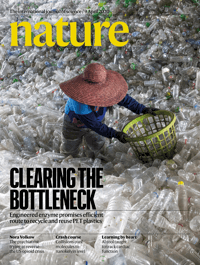
Nature. 2020 Apr;580(7802):269-273.
Mutational Signature in Colorectal Cancer Caused by Genotoxic Pks + E. Coli
Y-27632 dihydrochloride purchased from AbMole

Nature. 2020 Dec;588(7839):664-669.
Creation of bladder assembloids mimicking tissue regeneration and cancer
Y-27632 dihydrochloride purchased from AbMole
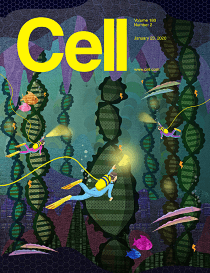
Cell. 2020 Jan 23;180(2):233-247.e21.
Snake Venom Gland Organoids.
Y-27632 dihydrochloride purchased from AbMole

Cell. 2020 May 7;S0092-8674(20)30501-8.
High-Resolution mRNA and Secretome Atlas of Human Enteroendocrine Cells
Y-27632 dihydrochloride purchased from AbMole

Cell Res. 2020 Feb;30(2):163-178.
ILF3 is a substrate of SPOP for regulating serine biosynthesis in colorectal cancer.
Y-27632 dihydrochloride purchased from AbMole

Nat Microbiol. 2020 Nov;5(11):1390-1402.
Reprogramming of host glutamine metabolism during Chlamydia trachomatis infection and its key role in peptidoglycan synthesis
Y-27632 dihydrochloride purchased from AbMole

Nat Biomed Eng. 2020 Sep;4(9):863-874.
High-throughput automated organoid culture via stem-cell aggregation in microcavity arrays
Y-27632 dihydrochloride purchased from AbMole

Nat Biomed Eng. 2020 Sep;4(9):875-888.
Three-dimensional single-cell imaging for the analysis of RNA and protein expression in intact tumour biopsies
Y-27632 dihydrochloride purchased from AbMole

Cell Stem Cell. 2020 Mar 5;26(3):431-440.e8.
Genome-Scale CRISPR Screening in Human Intestinal Organoids Identifies Drivers of TGF-β Resistance
Y-27632 dihydrochloride purchased from AbMole

Cell Stem Cell. 2020 Apr 2;26(4):503-510.e7.
CRISPR-Based Adenine Editors Correct Nonsense Mutations in a Cystic Fibrosis Organoid Biobank
Y-27632 dihydrochloride purchased from AbMole

Cell Stem Cell. 2020 Apr 2;26(4):569-578.e7.
Plasticity of Lgr5-Negative Cancer Cells Drives Metastasis in Colorectal Cancer
Y-27632 dihydrochloride purchased from AbMole

Cell Stem Cell. 2020 Nov 5;27(5):840-851.e6.
Next-Generation Surrogate Wnts Support Organoid Growth and Deconvolute Frizzled Pleiotropy In Vivo
Y-27632 dihydrochloride purchased from AbMole

Nat Commun. 2020 May 19;11(1):2493.
The Mutational Impact of Culturing Human Pluripotent and Adult Stem Cells
Y-27632 dihydrochloride purchased from AbMole

Nat Commun. 2020 Mar 11;11(1):1310.
An Organoid Biobank for Childhood Kidney Cancers That Captures Disease and Tissue Heterogeneity
Y-27632 dihydrochloride purchased from AbMole

Nat Commun. 2020 Dec 22;11(1):6438.
MaTAR25 lncRNA regulates the Tensin1 gene to impact breast cancer progression
Y-27632 dihydrochloride purchased from AbMole

Nat Commun. 2020 Sep 15;11(1):4629.
Phenotypic profiling with a living biobank of primary rhabdomyosarcoma unravels disease heterogeneity and AKT sensitivity
Y-27632 dihydrochloride purchased from AbMole

Adv Sci (Weinh). 2020 Jul 26;7(18):2001797.
Polyisocyanide Hydrogels as a Tunable Platform for Mammary Gland Organoid Formation
Y-27632 dihydrochloride purchased from AbMole

Nat Protoc. 2020 Oct;15(10):3380-3409.
Establishment of patient-derived cancer organoids for drug-screening applications
Y-27632 dihydrochloride purchased from AbMole

Cancer Res. 2020 Apr 1;80(7):1486-1497.
Truncated ASPP2 Drives Initiation and Progression of Invasive Lobular Carcinoma via Distinct Mechanisms
Y-27632 dihydrochloride purchased from AbMole

EMBO Mol Med. 2020 Feb 11.
Cysteamine-bicalutamide combination treatment restores alpha-ketoglutarate and corrects proximal tubule phenotype in cystinosis
Y-27632 dihydrochloride purchased from AbMole

Genome Res. 2020 Sep;30(9):1258-1273.
Comprehensive analysis of structural variants in breast cancer genomes using single-molecule sequencing
Y-27632 dihydrochloride purchased from AbMole

Environ Health Perspect. 2020 Jun;128(6):67008.
Effects of Inorganic Arsenic on Human Prostate Stem-Progenitor Cell Transformation, Autophagic Flux Blockade, and NRF2 Pathway Activation
Y-27632 dihydrochloride purchased from AbMole

Elife. 2020 Apr 21;9:e52511.
ERK3/MAPK6 Controls IL-8 Production and Chemotaxis
Y-27632 dihydrochloride purchased from AbMole

Biofabrication. 2020 May 19.
Use of Inkjet-Printed Single Cells to Quantify Intratumoral Heterogeneity
Y-27632 dihydrochloride purchased from AbMole

PLoS Pathog. 2020 Apr 13;16(4):e1008498.
Intestinal Restriction of Salmonella Typhimurium Requires caspase-1 and caspase-11 Epithelial Intrinsic Inflammasomes
Y-27632 dihydrochloride purchased from AbMole

Br J Cancer. 2020 May;122(11):1673-1685.
CSN6-TRIM21 Axis Instigates Cancer Stemness During Tumorigenesis
Y-27632 dihydrochloride purchased from AbMole

Sci Rep. 2020 Jul 31;10(1):12991.
Mutation accumulation and developmental lineages in normal and Down syndrome human fetal haematopoiesis
Y-27632 dihydrochloride purchased from AbMole

Sci Rep. 2020 Dec 8;10(1):21475.
Development of a human primary gut-on-a-chip to model inflammatory processes
Y-27632 dihydrochloride purchased from AbMole

Cancer Cell Int. 2020 Mar 18;20:86.
Breast Cancer Organoids From a Patient With Giant Papillary Carcinoma as a High-Fidelity Model
Y-27632 dihydrochloride purchased from AbMole

Infect Immun. 2020 Apr 13;IAI.00017-20.
Salmonella enterica Infection of Murine and Human Enteroid-Derived Monolayers Elicits Differential Activation of Epithelial-Intrinsic Inflammasomes
Y-27632 dihydrochloride purchased from AbMole

PLoS One. 2020 May 18;15(5):e0231588.
Patient-derived Oral Mucosa Organoids as an in Vitro Model for Methotrexate Induced Toxicity in Pediatric Acute Lymphoblastic Leukemia
Y-27632 dihydrochloride purchased from AbMole

STAR Protocols. 2020 Jun 19;Volume 1, Issue 1.
Protocol for Application, Standardization and Validation of the Forskolin-Induced Swelling Assay in Cystic Fibrosis Human Colon Organoids
Y-27632 dihydrochloride purchased from AbMole

ACS Appl. Bio Mater. 2020 Sep;9, 6273–6283.
Rapid Microfluidic Formation of Uniform Patient-Derived Breast Tumor Spheroids
Y-27632 dihydrochloride purchased from AbMole

NAS. 2020 Jun.
Multiscale activity imaging in mammary gland reveals how oxytocin enables lactation
Y-27632 dihydrochloride purchased from AbMole

Curr Protoc Immunol. 2020 Sep;130(1):e106.
Establishment and Culture of Human Intestinal Organoids Derived from Adult Stem Cells
Y-27632 dihydrochloride purchased from AbMole

Cell Rep Med. 2020 Dec 22;1(9):100161.
An Automated Organoid Platform with Inter-organoid Homogeneity and Inter-patient Heterogeneity
Y-27632 dihydrochloride purchased from AbMole

STAR Protoc. 2020 Dec 28;2(1):100239.
Protocol for generation of lung adenocarcinoma organoids from clinical samples
Y-27632 dihydrochloride purchased from AbMole

STAR Protoc. 2020 Dec 4;1(3):100192.
Establishment of Pancreatic Organoids from Normal Tissue and Tumors
Y-27632 dihydrochloride purchased from AbMole

2020 Nov.
Induction of different human enteroendocrine cells in intestinal organoids
Y-27632 dihydrochloride purchased from AbMole

2020 Oct.
Evaluating CRISPR-based Prime Editing for cancer modeling and CFTR repair in intestinal organoids
Y-27632 dihydrochloride purchased from AbMole

Patent. CN111500540A 2020 Aug 07.
Patent. CN111500540A
Y-27632 dihydrochloride purchased from AbMole

Patent. CN111012913A 2020 Apr 17.
Patent. CN111012913A
Y-27632 dihydrochloride purchased from AbMole

Nat Med. 2019 May;25(5):838-849.
An organoid platform for ovarian cancer captures intra- and interpatient heterogeneity.
Y-27632 dihydrochloride purchased from AbMole

Nat Biotechnol. 2019 Mar;37(3):303-313.
Tubuloids derived from human adult kidney and urine for personalized disease modeling.
Y-27632 dihydrochloride purchased from AbMole

Cancer Discov. 2019 Jul;9(7):852-871.
Oral Mucosal Organoids as a Potential Platform for Personalized Cancer Therapy.
Y-27632 dihydrochloride purchased from AbMole

Nat Commun. 2019 Aug 23;10(1):3800.
Rebalancing of actomyosin contractility enables mammary tumor formation upon loss of E-cadherin.
Y-27632 dihydrochloride purchased from AbMole

Proc Natl Acad Sci U S A. 2019 Dec 9.
Pancreatic cancer organoids recapitulate disease and allow personalized drug screening.
Y-27632 dihydrochloride purchased from AbMole

Cell Mol Life Sci. 2019 Dec 14.
Modulation of SRSF2 expression reverses the exhaustion of TILs via the epigenetic regulation of immune checkpoint molecules.
Y-27632 dihydrochloride purchased from AbMole

J Clin Med. 2019 Nov 5;8(11).
Patient-Derived Head and Neck Cancer Organoids Recapitulate EGFR Expression Levels of Respective Tissues and Are Responsive to EGFR-Targeted Photodynamic Therapy.
Y-27632 dihydrochloride purchased from AbMole

Biol Proced Online. 2019 Jun 15;21:12.
Establishment and Morphological Characterization of Patient-Derived Organoids from Breast Cancer.
Y-27632 dihydrochloride purchased from AbMole

Patent. CN109837242A 2019 Jun 04.
Patent. CN109837242A
Y-27632 dihydrochloride purchased from AbMole

Patent. CN109679915A 2019 Apr 26.
Patent. CN109679915A
Y-27632 dihydrochloride purchased from AbMole

Patent. US2019367872A1 2019 Dec 05.
Patent. US2019367872A1
Y-27632 dihydrochloride purchased from AbMole
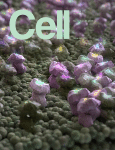
Cell. 2018 Jan 11;172(1-2):373-386.e10.
A Living Biobank of Breast Cancer Organoids Captures Disease Heterogeneity
Y-27632 dihydrochloride purchased from AbMole
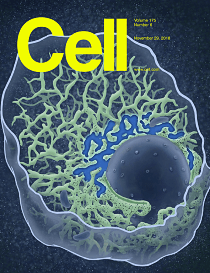
Cell. 2018 Nov 29;175(6):1591-1606.e19.
Long-Term Expansion of Functional Mouse and Human Hepatocytes as 3D Organoids.
Y-27632 dihydrochloride purchased from AbMole
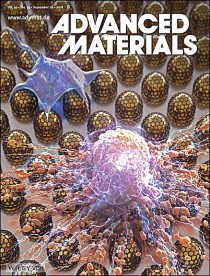
Adv Mater. 2018 Sep 10;e1801621.
Growth of Epithelial Organoids in a Defined Hydrogel.
Y-27632 dihydrochloride purchased from AbMole
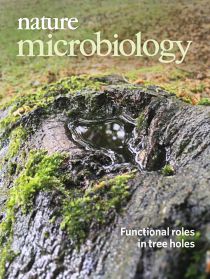
Nat Microbiol. 2018 Jul;3(7):814-823.
Modelling Cryptosporidium infection in human small intestinal and lung organoids.
Y-27632 dihydrochloride purchased from AbMole
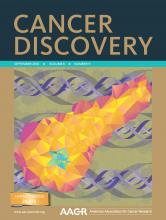
Cancer Discov. 2018 Sep 13.
Prediction of DNA Repair Inhibitor Response in Short Term Patient-Derived Ovarian Cancer Organoids.
Y-27632 dihydrochloride purchased from AbMole
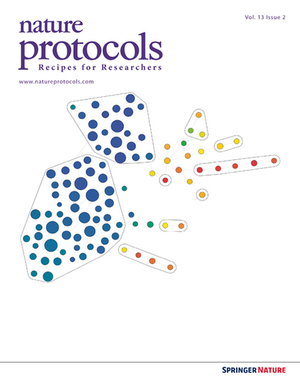
Nat Protoc. 2018 Jan;13(1):59-78.
Measuring mutation accumulation in single human adult stem cells by whole-genome sequencing of organoid cultures
Y-27632 dihydrochloride purchased from AbMole
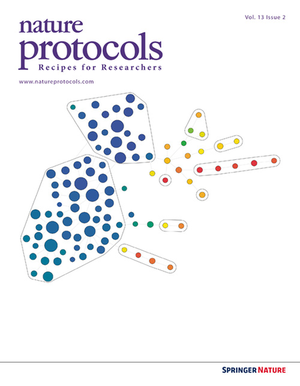
Nat Protoc. 2018 Feb;13(2):235-247.
A surgical orthotopic organoid transplantation approach in mice to visualize and study colorectal cancer progression
Y-27632 dihydrochloride purchased from AbMole
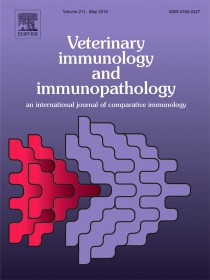
Vet Immunol Immunopathol. 2018 Dec;206:16-24.
Canine primary jejunal and colonic epithelial cells predominantly express TLR5 and TLR9 but do not change TLR expression pattern after stimulation with certain Toll-like receptor ligands.
Y-27632 dihydrochloride purchased from AbMole

Patent. WO2018091677A1 2018 May 24.
Patent. WO2018091677A1
Y-27632 dihydrochloride purchased from AbMole
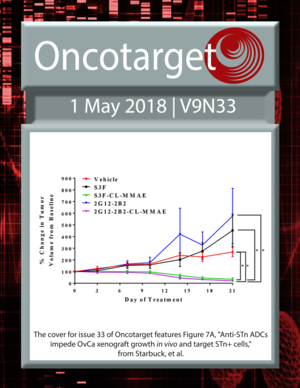
Oncotarget. 2017 Dec 28;9(12):10375-10387.
The crosstalk between breast carcinoma-associated fibroblasts and cancer cells promotes RhoA-dependent invasion via IGF-1 and PAI-1.
Y-27632 dihydrochloride purchased from AbMole

Mater Sci Eng C Mater Biol Appl. 2017 Sep 1;78:443-451.
A dual-layer macro/mesoporous structured TiO2 surface improves the initial adhesion of osteoblast-like cells
Y-27632 dihydrochloride purchased from AbMole
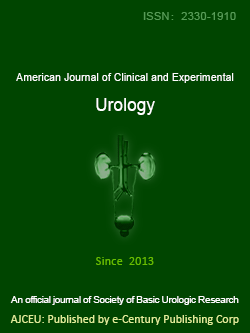
Am J Clin Exp Urol. 2017 Nov 9;5(3):25-33.
Organoid culture of human prostate cancer cell lines LNCaP and C4-2B
Y-27632 dihydrochloride purchased from AbMole

CAM. 2017 Sep 29.
Phenotypic heterogeneity in high-grade serous ovarian cancer: evidence for a stochastic model of proliferation
Y-27632 dihydrochloride purchased from AbMole

Patent. CN106834212A 2017 Jun 13.
Patent. CN106834212A
Y-27632 dihydrochloride purchased from AbMole

Patent. CN106967672A 2017 Jul 21.
Patent. CN106967672A
Y-27632 dihydrochloride purchased from AbMole

Nature. 2016 Nov 24;539(7630):560-564.
Designer matrices for intestinal stem cell and organoid culture
Y-27632 dihydrochloride purchased from AbMole
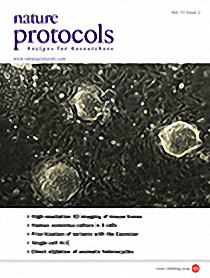
Nat Protoc. 2016 Feb;347-58.
Organoid culture systems for prostate epithelial and cancer tissue.
Y-27632 dihydrochloride purchased from AbMole

Natl Med J China. 2015 Nov 3;Vol. 95, No.41 3373-3377.
Change and Significance of RhoA/ROCK signaling pathway in the model with natural degeneration of the rat endplate chondrocytes
Y-27632 dihydrochloride purchased from AbMole

Section Infection and Immunity. .
Role of the proto-oncogene c-Myc in the development of Chlamydia trachomatis
Y-27632 dihydrochloride purchased from AbMole
. figure 1.jpg) |
Source | Nature (2016). Figure 1. Y-27632 (Abmole Bioscience Inc) |
| Method | Cell culture. | |
| Cell Lines | single cells | |
| Concentrations | 10 μM | |
| Incubation Time | ||
| Results |
| Cell Experiment | |
|---|---|
| Cell lines | cyES cells |
| Preparation method | For 5-bromo-2′-deoxyuridine (BrdU) incorporation assays, dissociated cyES cells were seeded at a concentration of 500 cells/cm2 onto fresh feeder layers in the presence of the ROCK inhibitors Y-27632 (Wako Pure Chemical Industries, Tokyo, Japan) or Fasudil (Tocris Bioscience, MO, USA) during the first 24 h of culture. The BrdU incorporation assay was performed using colorimetric BrdU Cell proliferation Kit (Roche Diagnostics) according to the manufacturer's instructions. BrdU incorporations were also observed by immunocytochemical (ICC) staining with BrdU Labeling and Detection Kit I (Roche Diagnostics). |
| Concentrations | 0, 0.1, 0.5, 5, 10, 20µM |
| Incubation time | 24 h |
| Animal Experiment | |
|---|---|
| Animal models | EAC modeling |
| Formulation | dissolved in 0.9% NaCl |
| Dosages | 0.1, 1, 10 mg/kg/day for 14 days |
| Administration | i.p. |
| Molecular Weight | 320.26 |
| Formula | C14H21N3O.2HCl |
| CAS Number | 129830-38-2 |
| Solubility (25°C) | Water ≥ 60 mg/mL DMSO ≥ 35 mg/mL |
| Storage |
Powder -20°C 3 years ; 4°C 2 years In solvent -80°C 6 months ; -20°C 1 month |
| Related ROCK Products |
|---|
| OXA-06 hydrochloride
OXA-06 hydrochloride is an ATP-competitive ROCK inhibitor that blocks anchorage-dependent growth and invasion of non-small cell lung cancer cell lines. |
| Y-33075 hydrochloride
Y-33075 hydrochloride (Y-39983) is a selective ROCK inhibitor derived from Y-27632, and is more potent than Y-27632, with an IC50 of 3.6 nM. |
| SR-3677 dihydrochloride
SR-3677 dihydrochloride is a potent and selective ROCK-I and ROCK-II inhibitor with an IC50 values of 56 nM and 3 nM. |
| Akt/ROCK-IN-1
Akt/ROCK-IN-1 (B12) is a dual inhibitor for Akt and ROCK, with the IC50s of 0.023 nM and 1.47 nM, respectively. |
| Scaff10-8
Scaff10-8, bound to RhoA, inhibits the AKAP-Lbc-mediated RhoA activation. |
All AbMole products are for research use only, cannot be used for human consumption or veterinary use. We do not provide products or services to individuals. Please comply with the intended use and do not use AbMole products for any other purpose.


Products are for research use only. Not for human use. We do not sell to patients.
© Copyright 2010-2024 AbMole BioScience. All Rights Reserved.
